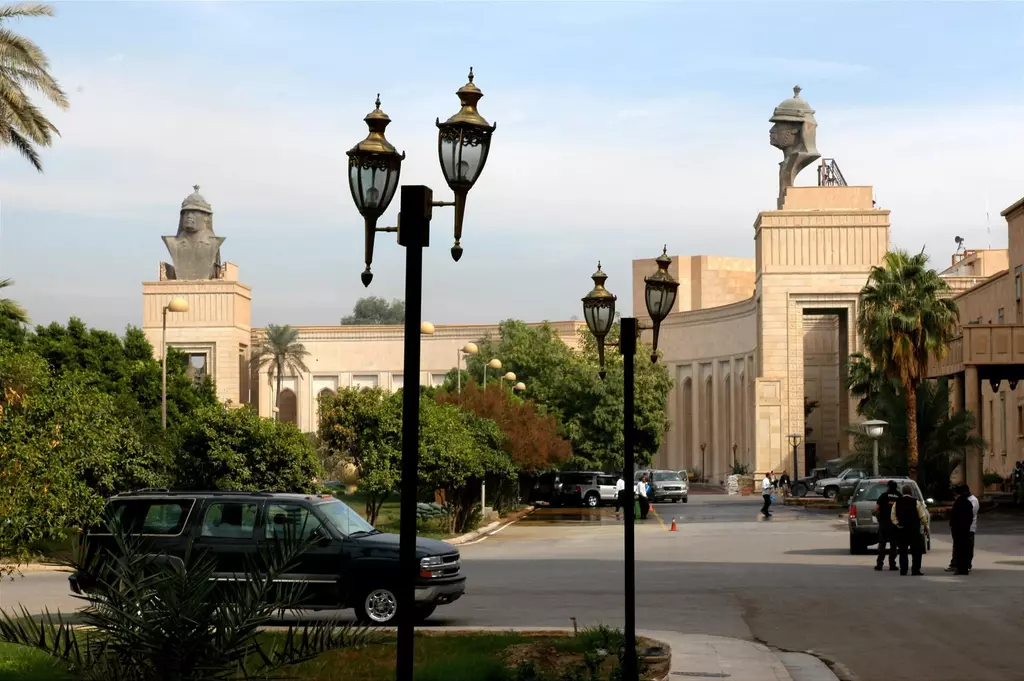Presidential Palace

- The Presidential Palace in Iraq is an important historical and political landmark, located in the heart of Baghdad. The palace serves as the official residence and office of the President of Iraq, although its role and significance have evolved throughout the country’s history. The architecture of the Presidential Palace reflects a blend of modern and traditional styles, symbolizing Iraq’s rich cultural heritage and its aspirations for national development. The building complex is expansive, with large courtyards, gardens, and several administrative buildings, and it remains one of the most prominent structures in Baghdad, both for its symbolic and practical significance.
- Historically, the Presidential Palace has been the site of many important political events, ceremonies, and official functions. It has hosted visiting heads of state, foreign dignitaries, and key diplomatic meetings, acting as a center of political activity in the country. The palace is often the backdrop for national speeches, declarations, and governmental affairs, where decisions related to the future of Iraq are made. In addition to its political function, the Presidential Palace also serves as a symbol of Iraq's sovereignty, unity, and the authority of the presidency within the framework of the government.
- The palace complex is surrounded by lush gardens and large open spaces, which contribute to its grandeur. Over the years, the palace has been the subject of renovations and restorations to preserve its historic value, ensuring that it remains a fitting symbol of the nation’s leadership and governance. It also holds cultural importance, as its architecture and design reflect Iraq’s traditional influences, with intricate detailing and a connection to the country’s artistic history. The Presidential Palace has witnessed many moments in Iraq’s political evolution, playing a role in shaping the country's modern identity.
- Despite its significance, the palace has also been a symbol of conflict and political turmoil in Iraq’s recent history. During times of upheaval and regime change, the palace became a focal point of power struggles, representing both authority and the volatility of the country’s political system. Today, while it continues to function as the official residence and administrative center of the President, the palace also serves as a reminder of Iraq’s complex history and its ongoing journey toward stability and peace. Its continued presence underscores the importance of strong, effective leadership in Iraq’s efforts to rebuild and strengthen its political institutions.
